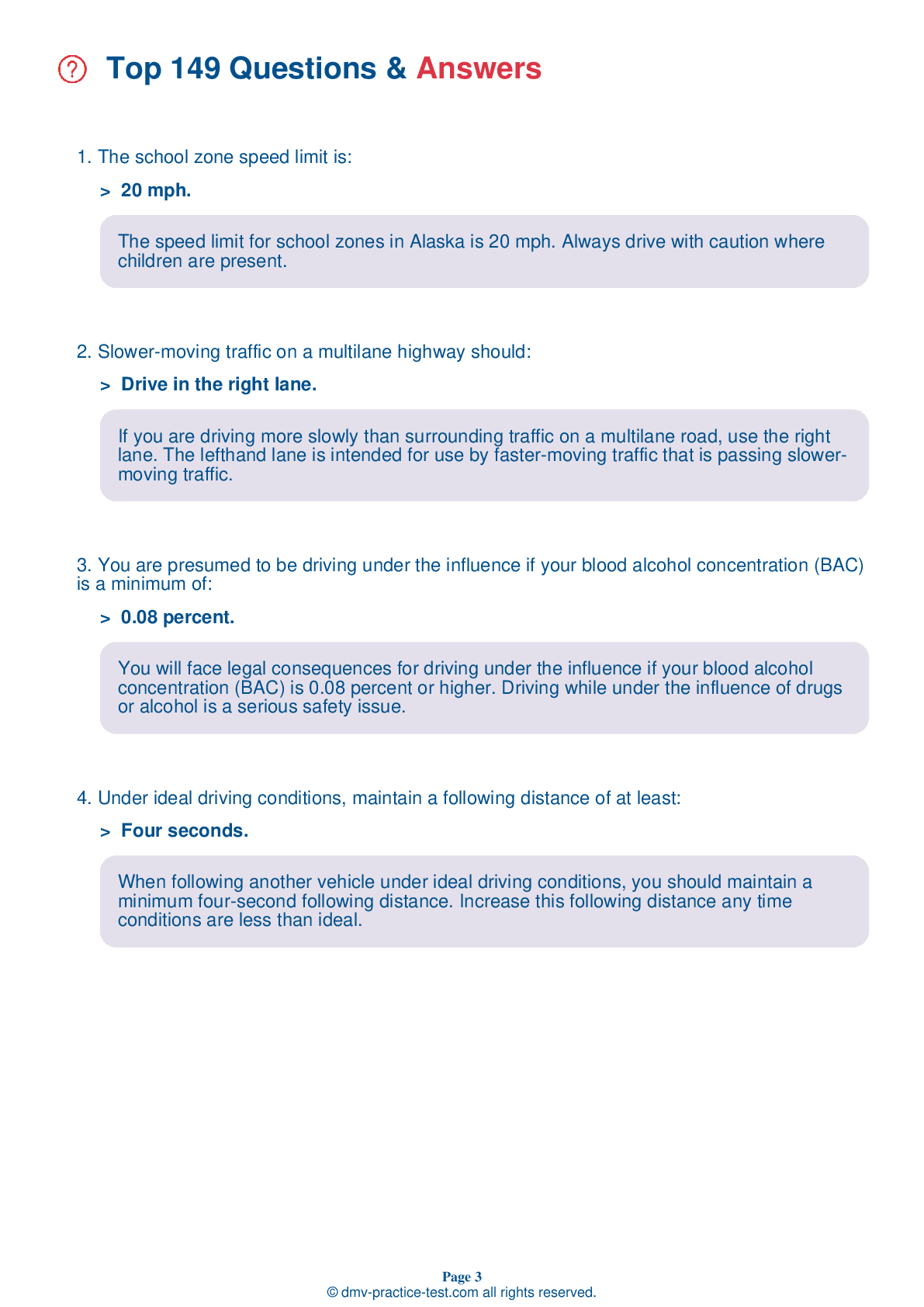FREE Alaska DMV Practice Test #20
This Alaska DMV practise tests has just been updated for January 2025. It contains questions based on the most essential traffic signs and limitations from the Alaska Driver Handbook for 2025. Use actual questions that are very close (often identical!) to the DMV driving permit test and driver's licence exam to prepare for the DMV driving permit test and driver's licence exam.
To help you recall the topics, each practise test question includes a suggestion and explanation. The written component of the official DMV test will include questions about road rules, traffic signs, and driving statutes, as well as information from the Driver Handbook.
To get the required passing mark, you must correctly answer 16 out of 20 questions. Take our DMV practise exam to help you prepare for your Alaska instruction permit or driver's licence.
The DMV exam is available in multiple languages.
Using any form of testing aid will result in an automatic failure, and the DMV may take further action against your driver's licence, so don't do it.
1 . If two vehicles approach an unmarked intersection at the same time:
If two vehicles arrive to an unmarked intersection at the same time, the driver on the left must yield the right-of-way to the driver on the right. No driver should assume that they will be given the right-of-way.
2 . If a transit vehicle is signaling to re-enter the main roadway following a stop, you must:
You must yield to any transit vehicle that is signaling to pull back onto the main roadway after it has stopped to load or unload passengers. Change lanes, slow down, or stop to allow the bus safe re-entry into traffic.
3 . You are turning onto a two-lane road divided by a broken yellow line. You know immediately that:
Yellow centerlines are used to separate traffic moving in opposite directions. Broken lines may be crossed to pass slower-moving traffic when it is safe to do so.
4 . Blood alcohol content (BAC) depends on each of the following, except:
Your blood alcohol content (BAC) depends on how much alcohol you drink, how much time passes between drinks, and your weight. It is not affected by the type of alcoholic beverages you drink, your level of physical fitness, or how well you can "hold your liquor."
5 . The speed limit on most Alaskan roadways is:
Business districts, alleys, school zones, and residential districts have their own specific speed limits. All other roadways in Alaska have a 55 mph maximum speed limit, unless otherwise posted.
6 . You must yield for emergency vehicles:
You must yield the right-of-way to any emergency vehicle that is using its siren or flashing lights.
Need Car Insurance? No problem!
Compare the best rates in Alaska and find a personalized policy that meets your needs.
1. Are You Currently insured ?
2. Married ?
3. Do you own your Home?
4. Do you have more than 1 car ?
5. Have you or a Family Member Honorably Served in U.S. Military ?
6. Your Name
7. Age
8. Zip code
IMPORTANT REMINDER:Auto Insurance is Mandatory to drive in Alaska. Get covered before you hit the road to avoid any fines.
Ranked by best match



